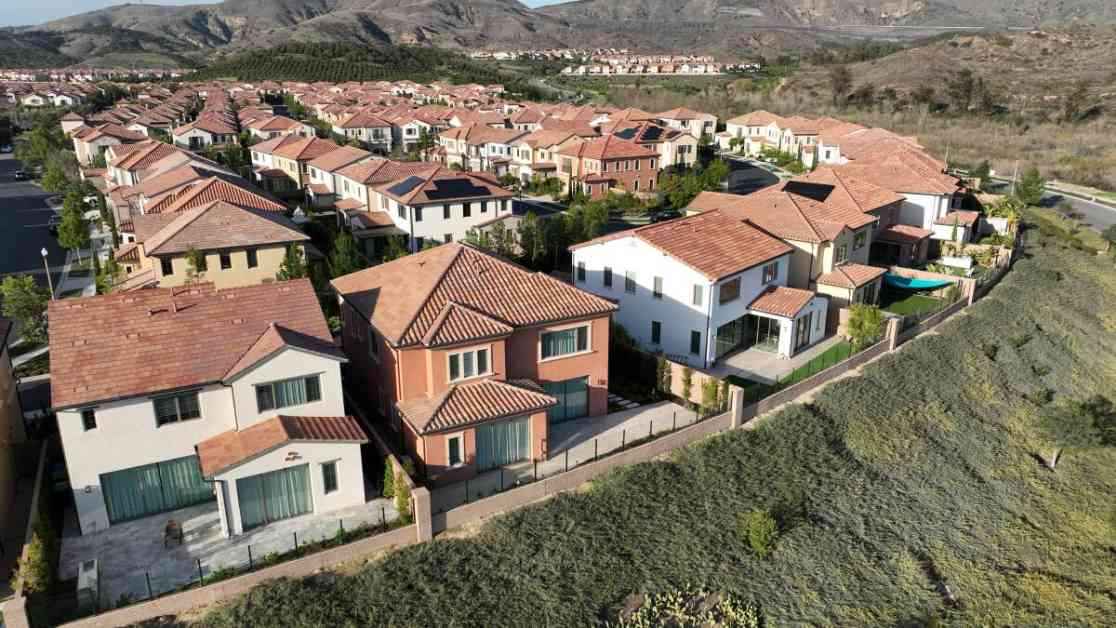In a world where wildfires have become an all too common threat, the story of the Silverado fire in Irvine stands out as a shining example of successful fire resistance. Four years before devastating fires tore through Los Angeles, the city of Irvine faced a similar crisis in October 2020. As bone-dry conditions and powerful Santa Ana winds set the stage for disaster, the Silverado fire erupted, threatening the Orchard Hills neighborhood.
Residents of Orchard Hills, a master-planned community nestled in the wildland-urban interface, were forced to evacuate, unsure if their homes would survive the blaze. However, against all odds, not a single residence in the community was damaged. The victory over the fire was a testament to the meticulous planning, innovative design, and strategic partnerships that had been put in place.
Lessons from Orchard Hills
As Los Angeles grapples with the increasing threat of wildfires, experts point to Orchard Hills as a blueprint for fire-resistant communities. While the comparison between Irvine and L.A. may not be perfect, there are valuable insights to be gleaned from Orchard Hills’ success story. The key to the neighborhood’s fire resistance can be traced back over a century to the Irvine Valencia Growers’ avocado orchard, which now serves as a natural barrier against wildfires.
According to Sean Doran, a fire captain with the Orange County Fire Authority, the partnership between Orchard Hills and the fire authority has been instrumental in creating a fire-hardened community. The collaboration between developers, the fire authority, and fire behavior analysts has led to stringent building regulations that prioritize fire safety. Residents like Ron Nestor, a senior principal at an architecture firm, credit these regulations with protecting their homes during the Silverado fire.
Building a Fire-Resistant Community
Orchard Hills’ success in withstanding wildfires can be attributed to a multi-tiered defense strategy. The neighborhood’s fuel modification zone, filled with fire-resistant vegetation, acts as the first line of defense against oncoming fires. Developers have also implemented additional safeguards, such as exterior walls and fortified homes, to protect vulnerable properties from radiant heat and ember intrusion.
Inside Orchard Hills, homes are constructed with fire-resistant materials like stucco, fiber cement, and tempered glass. The neighborhood’s strict Homeowner Association guidelines dictate acceptable plant types and landscaping practices to minimize fire risk. These measures, combined with wide roads and emergency evacuation plans, ensure that residents can safely evacuate in the event of a wildfire.
Despite the success of Orchard Hills’ fire-resistant design, the Silverado fire serves as a reminder that there is always more to learn. While the neighborhood emerged unscathed, other areas were not as fortunate, highlighting the ongoing need for preparedness and resilience in the face of wildfires. As Bobby Simmons, Irvine’s emergency services manager, reflects on the events of the Silverado fire, he emphasizes the importance of identifying lessons learned to better prepare for future emergencies.
In the wake of devastating wildfires that have plagued Southern California, Orchard Hills stands as a beacon of hope and resilience. By drawing on the lessons learned from Irvine’s success story, communities across the region can work towards creating a more fire-resistant future. As climate change continues to fuel wildfires, the need for proactive planning and collaboration has never been more critical. The lessons of Orchard Hills serve as a reminder that with careful planning and strategic partnerships, communities can build a more resilient future in the face of wildfires.


